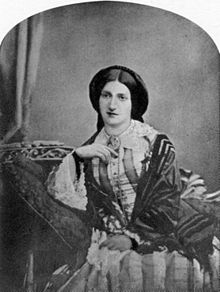My Poppa was a tool maker, ending his working life at a
technical college in Basildon, a place that sprung up over his lifetime from
the fields he knew and loved. He was one of these wonderful squirrel type
characters, who knew that almost anything was of use one day and hated the idea
of throwing anything out. Small pieces of metal, cutters etc would invariably
find their rest in the already overflowing black engineers tool cabinet and on
inheriting it I had the tough task of trying to decided what I felt would one day be useful and what
should go on to be recycled and turned into something else. I was aided in this
by my general ignorance with regard to engineering and metal work in general
and so the little cabinet was soon emptied and cleaned, only to then be swiftly
commandeered by the other half as a sewing box.
A little while ago I stumbled on another one, this time
unstained, sat in the window of a small antique shop. As with so many (my Poppa’s included) it had lost it’s door, but was in good overall condition and
had been cleaned and polished by the shop owner. We agreed a price that was
fair and I brought it home to reline the draws (which I detailed on a previous blog post) and then sold it using a rather well known auction website, to a costume designer working on a Sci-fi film who was delighted with it.
However, before I sent it to it’s new owner I took some measurements and
drew out rough sketches in the back of my notebook, thinking that making one
would be a very enjoyable project and handy for keeping various craft tools in
place and easily transportable.
So when I signed up to a furniture making course at my own local
technical college I knew exactly what I wanted to make and I went along to the first session,
notebook in hand, and tried to explain to the tutors what my ideas where and
what the cabinet looked like. It’s is so often the imbalance of knowledge that
gives rise to confusion and this was certainly the case here and on reflection
a photo or two would have made things so much clearer; instead I watched as
they tried to make sense of my little partial drawings, that were marked with
the readings from the micrometer I had used to measure it to 0.1 mm accuracy. The sketches and figures made sense
to me, because I knew where they had been taken from and I knew how the cabinet
worked as I had a mental picture of the finished piece. The second week I am not
sure if I improved the situation when I turned up rather late and flustered
(although I was the only one who cared), with several pages of scale drawings
that once again made perfect sense to me.
Hopefully you'll understand then why it came as a huge relief when last night at our third session, the main tutor, studying my drawings, said ‘I get what you are making
now, this is going to be a lovely little cabinet’ and was positive and encouraging
about me building it. However, I had drawn the cabinet to the same dimensions as the
original, only to discover that the oak timber I had available was not wide
enough and had decided that my new one would need to be much narrower. The tutor asked if I was
wedded to the idea of using the oak I had taken in and, mindful that something
more exciting might be in the offing, I said not particularly. This led to me
being taken out through a series of rooms and into the timber store and shown a
huge piece of mahogany at the bottom of a stack. ‘Why not make it out of that?’
he asked.
So, I have got to go back to the drawings, rather pleasantly
and rework it not just to the original size, but on his suggestion a little
larger so that the door fits cleanly in the bottom when in use. I’ll be
documenting the progression of building it here and will publish the plans and
photos of the finished cabinet; hopefully it will put a smile on the face of my Poppa and give me somewhere to poke the bits that are 'too good to throw away'!
In the meantime please do visit Adam Cherubini’s
blog Arts & Mysteries where you’ll find him contemplating and building a
very similar piece.







